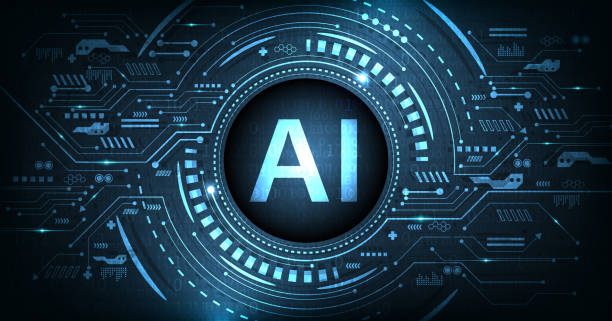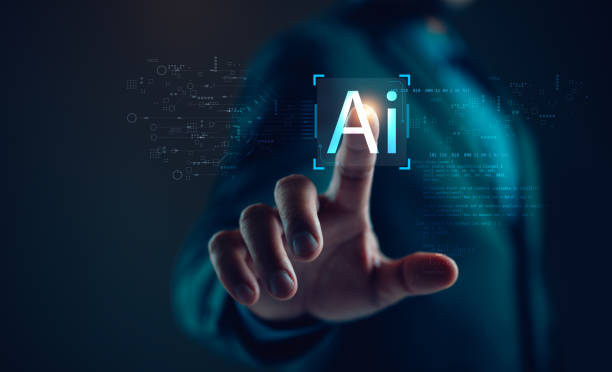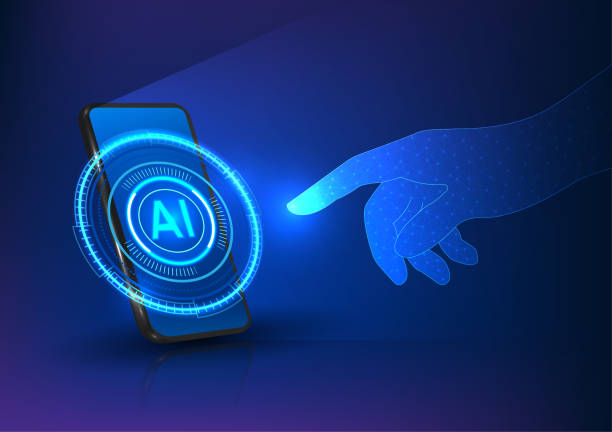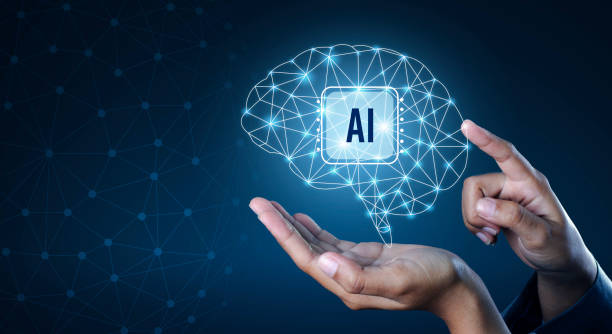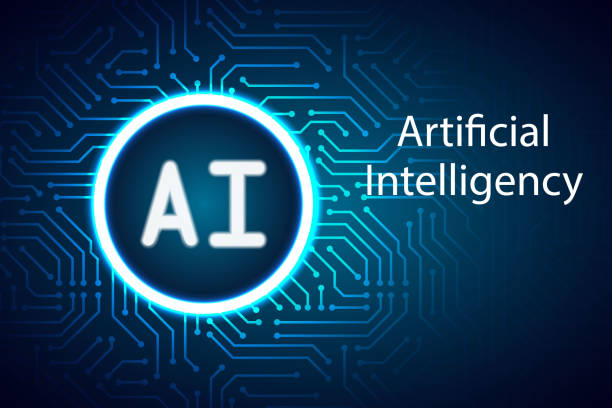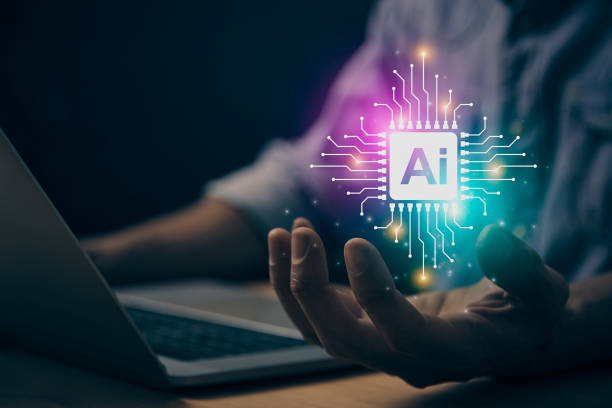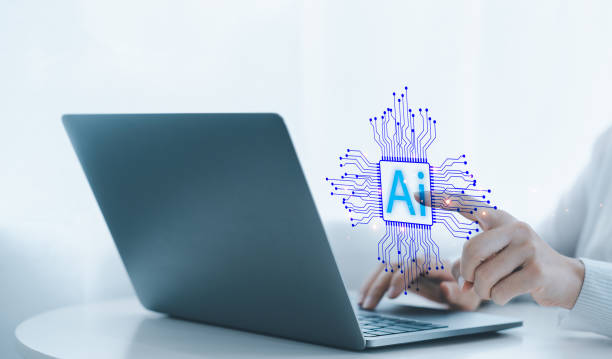What is an AI Assistant and What are its Applications?
In today’s world, #Artificial_Intelligence (AI) is rapidly advancing and providing us with various tools.
One of these powerful tools is the AI assistant.
But what exactly is an AI assistant and what are its applications? Simply put, an AI assistant is a computer program that can perform various tasks automatically.
These tasks can include answering questions, generating text, translating languages, summarizing articles, writing code, managing emails, and even controlling smart home devices.
The applications of AI assistants are vast and diverse.
In business, an AI assistant can help improve productivity, reduce costs, and provide better customer service.
For example, an AI assistant can answer frequently asked customer questions, schedule appointments, and generate analytical reports.
In education, an AI assistant can help students learn new concepts, review assignments, and provide personalized feedback.
Artificial intelligence even has many applications in daily life.
You can use an AI assistant to play music, set alarms, control home lighting, or even order food.
The main difference between an AI assistant and other computer programs is that an AI assistant uses Machine Learning and Natural Language Processing to understand and respond to your questions and requests.
This means that an AI assistant can learn over time and improve its performance.
AI assistant can make our lives easier and more productive as a powerful tool.
By understanding the various applications of this technology, you can use it in different aspects of your life.
Does your company website create a professional and lasting first impression in the minds of potential customers? Rasaweb, with its professional corporate website design, not only reflects your brand’s credibility but also opens a path for your business growth.
✅ Build a powerful and reliable brand image
✅ Attract target customers and increase sales
⚡ Get Free Consultation
Different Types of AI Assistants and Their Key Features
Click here to preview your posts with PRO themes ››
AI assistants come in various types, each with its own unique features and applications.
Generally, AI assistants can be divided into two main categories: Virtual Assistants and Chatbots.
Virtual assistants like Siri, Google Assistant, and Alexa, are software programs that can interact with you via voice or text and perform various tasks.
These assistants are usually installed on smart devices such as mobile phones, smart speakers, and computers, and can help you with tasks like setting alarms, playing music, sending messages, and searching the internet.
The key feature of virtual assistants is their ability to understand natural language and respond to your questions in a natural way.
Chatbots are software programs designed to interact with users on websites, messaging apps, and social media.
These bots are typically used to answer frequently asked questions, provide customer support, or gather information.
The key feature of chatbots is their ability to provide quick and accurate answers to user questions.
In addition to these two main categories, there are other AI assistants designed for specific applications.
For example, medical AI assistants can help doctors diagnose diseases and provide appropriate treatments.
Financial AI assistants can help investors manage their assets.
And educational AI assistants can help students learn new concepts.
AI assistant of any type aims for nothing but ease and increased efficiency.
Key features of AI assistants include the ability to understand natural language, answer questions, perform various tasks, learn from experiences, and provide personalized services.
Choosing the right type of AI assistant depends on your needs and goals.
Guide to Setting Up and Configuring an AI Assistant
Setting up and configuring an AI assistant can be a simple and enjoyable process, especially if you follow the steps correctly.
In this section, we will show you how to set up and configure an AI assistant, using a hypothetical example of Google Assistant.
Click here to preview your posts with PRO themes ››
Step 1 Choose a Platform First, you need to select the platform on which you want to deploy your AI assistant.
There are various platforms for developing AI assistants, such as Google Assistant, Amazon Alexa, and Microsoft Cortana.
For this example, we will use Google Assistant.
To get started with Google Assistant, you need to have a Google account and install the Google Actions SDK.
Step 2 Create a New Project After installing the Google Actions SDK, you need to create a new project in the Google Actions console.
In this project, you can define information about your AI assistant, such as its name, description, and language.
You also need to specify what tasks your AI assistant will perform.
Step 3 Design Interactions After creating the project, you need to design the interactions between the user and the AI assistant.
This includes defining the inputs that the user can provide to the AI assistant, and the outputs that the AI assistant will provide to the user.
You can use various tools to design interactions, such as Dialogflow and API.AI.
Design the AI assistant to be natural and efficient.
Step 4 Test and Deploy After designing the interactions, you need to test your AI assistant to ensure it works correctly.
You can use various testing tools for this purpose.
Once you are confident of its functionality, you can publish your AI assistant in Google Assistant for users to utilize.
| Platform | Features | Suitable For |
|---|---|---|
| Google Assistant | Integration with Google ecosystem, advanced natural language processing capabilities | Google ecosystem users, developers |
| Amazon Alexa | Diverse skills, compatibility with various devices | Home users, businesses |
| Microsoft Cortana | Integration with Windows, enterprise capabilities | Windows users, organizations |
Best Practices for Training and Improving AI Assistant Performance
Training and improving the performance of an AI assistant is an ongoing process that requires continuous attention and effort.
In this section, we will explore the best practices for training and improving the performance of an AI assistant.
Collecting Training Data The first step in training an AI assistant is to collect training data.
This data can include user questions and answers, texts, and audios.
The more abundant and diverse the training data, the better the AI assistant can learn and respond to user questions and requests.
AI assistant needs data.
Using Reinforcement Learning Reinforcement learning is a machine learning method in which an agent learns how to act in an environment to maximize its reward.
This method can be used to train AI assistants to perform complex tasks such as playing games, driving, or negotiating.
Evaluation and Feedback After training the AI assistant, you need to evaluate its performance and collect feedback.
This feedback can be collected from users, experts, or through automated evaluation tools.
The collected feedback should be used to improve the AI assistant’s performance.
Continuous Updates The world of artificial intelligence is rapidly changing.
Therefore, it is important to continuously update your AI assistant to benefit from the latest advancements in this field.
This includes updating algorithms, training data, and new features.
By using these methods, you can improve the performance of your AI assistant and turn it into a more powerful and useful tool.
Are you losing business opportunities because of an outdated website? With Rasaweb, permanently solve the problem of not attracting potential customers through your website!
✅ Attract more qualified leads
✅ Increase brand credibility in the eyes of customers
⚡ Get Free Corporate Website Design Consultation
Challenges and Limitations of Using AI Assistants
Despite numerous advantages, the use of AI assistants also comes with challenges and limitations.
In this section, we will discuss some of these challenges and limitations.
Privacy One of the most important challenges in using AI assistants is privacy concerns.
AI assistants typically collect a lot of information about their users, such as questions and requests, location, and personal data.
This information can be used for various purposes, such as targeted advertising or surveillance.
It is important for users to be aware of how their information is collected and used by AI assistants and to take necessary steps to protect their privacy.
AI assistant and privacy, an important equation.
Security AI assistants can be targets of cyberattacks.
Hackers can gain access to users’ personal information, control smart devices, or even carry out malicious attacks through AI assistants.
It is important for AI assistant developers to implement the necessary security measures to protect their users from these threats.
Accuracy and Reliability AI assistants are not yet perfect and may make mistakes.
These mistakes can lead to providing inaccurate information, performing incorrect tasks, or even causing harm to users.
It is important for users to be aware that AI assistants may make mistakes and should not be fully relied upon.
Bias AI assistants can be biased.
This bias can result from biased training data, biased algorithms, or even developer bias.
Bias in AI assistants can lead to providing unfair services to users.
It is important for AI assistant developers to strive to reduce bias in these systems.
Dependency Excessive use of AI assistants can lead to dependency.
Users may gradually lose the ability to perform tasks without the help of AI assistants.
It is important for users to use AI assistants in moderation and maintain their skills.
What Will the Future of AI Assistants Look Like?
The future of AI assistants looks very bright and exciting.
With continuous advancements in artificial intelligence, AI assistants are expected to become much more powerful, intelligent, and useful in the near future.
Integration with the Real World In the future, AI assistants are expected to integrate more with the real world.
This includes integration with smart devices, self-driving vehicles, and even robots.
By integrating with the real world, AI assistants can provide more help to users in their daily tasks.
Greater Personalization In the future, AI assistants are expected to offer more personalization.
This includes learning user preferences, providing personal suggestions, and even adjusting the voice and tone of responses.
With greater personalization, AI assistants can help users perform their tasks more effectively and enjoyably.
AI assistant and personalization, a powerful synergy.
Advanced Capabilities In the future, AI assistants are expected to offer more advanced capabilities.
This includes abilities such as understanding emotions, predicting needs, and even solving complex problems.
With advanced capabilities, AI assistants can help users solve problems and make important decisions.
Wider Accessibility In the future, AI assistants are expected to be more widely accessible.
This includes access through different devices, different languages, and even for people with special needs.
With wider accessibility, AI assistants can help more people around the world.
Overall, the future of AI assistants is very promising.
With continuous advancements in this field, AI assistants are expected to play a more important role in our lives and help us with daily tasks, problem-solving, and important decision-making.
Comparison of Popular AI Assistants in the Market (2024)
In 2024, the AI assistant market is full of various options, each with its own strengths and weaknesses.
To choose the best option, it is necessary to compare these assistants.
In this section, we will compare some of the most popular AI assistants available in the market.
Google Assistant is a powerful AI assistant that is seamlessly integrated with the Google ecosystem.
This assistant can effectively answer your questions, perform various tasks, and control your smart home devices.
Google Assistant performs particularly well in understanding natural language and answering complex questions.
Amazon Alexa is a popular AI assistant widely used in Amazon Echo devices.
Alexa has diverse skills that can help you with tasks such as playing music, setting alarms, and online shopping.
Alexa performs particularly well in controlling smart home devices.
Apple Siri is an AI assistant that is pre-installed on Apple devices.
Siri can help you with tasks such as sending messages, making phone calls, and setting reminders.
Siri performs particularly well in integration with the Apple ecosystem.
Microsoft Cortana is an AI assistant that is seamlessly integrated with Windows.
Cortana can help you with tasks such as searching the internet, managing emails, and scheduling appointments.
Cortana performs particularly well in enterprise environments.
Choosing the best AI assistant depends on your needs and preferences.
If you use the Google ecosystem, Google Assistant is a good option.
If you are looking to control your smart home devices, Amazon Alexa is a suitable option.
If you use Apple devices, Siri is a good option.
And if you work in an enterprise environment, Microsoft Cortana is a suitable option.
AI assistant and the right choice, key to success.
| Assistant Name | Developer | Operating System | Features | Pros | Cons |
|---|---|---|---|---|---|
| Google Assistant | Android, iOS, Web | Search, reminders, device control, integration with Google services | Strong voice recognition, excellent integration with Google ecosystem | Privacy concerns | |
| Amazon Alexa | Amazon | Alexa Devices, iOS, Android | Smart home control, music playback, online ordering | Extensive device ecosystem, many skills | Lower voice quality compared to Google Assistant |
| Siri | Apple | iOS, macOS | Reminders, messaging, control of Apple devices | Excellent integration with Apple ecosystem, high security | More limited capabilities compared to rivals |
| Microsoft Cortana | Microsoft | Windows, Android, iOS | Reminders, note-taking, calendar management | Good integration with Windows, easy note-taking | More limited support compared to rivals |
Advanced Tips and Tricks for Professional Use of AI Assistants
Professional use of an AI assistant requires mastering advanced tips and tricks.
In this section, we will discuss some of these tips and tricks.
Creating Custom Commands Many AI assistants allow you to create custom commands.
These commands can be used to perform specific tasks or automate complex processes.
By creating custom commands, you can turn your AI assistant into a more powerful and personalized tool.
Using APIs If you are a developer, you can use the AI assistant’s API to create new applications or integrate the AI assistant with your existing applications.
This allows you to leverage the power of artificial intelligence in your applications and improve the user experience.
AI assistant and API, development tools.
Connecting to Other Services Many AI assistants allow you to connect to other services such as email, calendar, and social networks.
This allows you to use your AI assistant to manage these services and perform your tasks more efficiently.
Using Routines Routines are a set of commands that can be executed with a single command.
By using routines, you can perform multiple tasks simultaneously and save time.
For example, you can create a routine that, by saying “Good morning,” turns off the alarm, plays the news, and makes coffee.
Optimizing Voice For your AI assistant to correctly recognize your voice, you need to optimize your environment.
This includes reducing noise, adjusting the microphone, and training the AI assistant to recognize your voice.
Does your company website create a professional and lasting first impression in the minds of potential customers? Rasaweb, with its professional corporate website design, not only reflects your brand’s credibility but also opens a path for your business growth.
✅ Build a powerful and reliable brand image
✅ Attract target customers and increase sales
⚡ Get Free Corporate Website Design Consultation
Introduction to Auxiliary Tools and Practical Plugins for AI Assistants
To increase the efficiency and capabilities of your AI assistant, you can use auxiliary tools and practical plugins.
In this section, we will introduce some of these tools and plugins.
IFTTT is an automation service that allows you to connect different applications and devices.
By using IFTTT, you can connect your AI assistant to other services such as social networks, email, and smart home devices and perform your tasks automatically.
AI assistant and IFTTT, automation at its peak.
Zapier is another automation service that allows you to connect different applications and devices.
Zapier has a simpler user interface than IFTTT and is more suitable for beginner users.
Dialogflow is an AI assistant development platform that allows you to create custom AI assistants.
Dialogflow has powerful tools for designing interactions, training natural language models, and integrating with other services.
Wit.ai is another AI assistant development platform that allows you to create custom AI assistants.
Wit.ai is owned by Facebook and is seamlessly integrated with the Facebook platform.
Skills Store for Amazon Alexa and Google Actions Console for Google Assistant are marketplaces where you can find and install new skills and actions for your AI assistant.
These skills and actions can add new capabilities to your AI assistant and make it more useful.
Ethical and Legal Issues Related to AI Assistants
The use of AI assistants is accompanied by numerous ethical and legal issues that require careful attention and consideration.
In this section, we will discuss some of these issues.
Privacy As mentioned earlier, privacy is one of the most important ethical issues related to AI assistants.
AI assistants collect a lot of information about their users, and this information can be used for various purposes.
It is important for users to be aware of how their information is collected and used by AI assistants and to take necessary steps to protect their privacy.
AI assistant must respect privacy.
Responsibility If an AI assistant makes a mistake and causes harm, who is responsible? Is the developer responsible? Is the user responsible? These questions do not yet have definitive answers and require legal and ethical consideration.
Bias As mentioned earlier, AI assistants can be biased.
This bias can result from biased training data, biased algorithms, or even developer bias.
Bias in AI assistants can lead to providing unfair services to users.
Transparency AI assistant algorithms are usually very complex, and understanding how they work is difficult.
This lack of transparency can lead to users’ distrust in these systems.
It is important to strive to make AI assistant algorithms more transparent and understandable.
Employment The widespread use of AI assistants can lead to job losses.
AI assistants can automate many tasks, which can lead to unemployment.
It is important to find solutions to address this problem.
Frequently Asked Questions
| Row | Question | Answer |
|---|---|---|
| 1 | What is an AI assistant? | It is a software program that performs tasks or services for an individual based on spoken or written commands. |
| 2 | Name a few examples of AI assistants? | Siri, Google Assistant, Alexa, and Cortana. |
| 3 | How do AI assistants work? | They use Natural Language Processing (NLP), machine learning, and artificial intelligence to understand user input and provide responses or perform tasks. |
| 4 | What can an AI assistant do? | Answer questions, set reminders, play music, send messages, manage calendars, and control smart devices. |
| 5 | What are the benefits of using an AI assistant? | Increased productivity, quick access to information, assistance for people with disabilities, and simplifying daily tasks. |
| 6 | Are AI assistant responses always accurate? | No, they may sometimes make mistakes or provide outdated information, especially on complex or sensitive topics. |
| 7 | What are the privacy concerns regarding AI assistants? | Recording and storing voice/text data, potential for unauthorized access, and using data for advertising purposes. |
| 8 | What will the future of AI assistants be like? | Becoming smarter, greater integration with devices and platforms, deeper understanding of emotions, and the ability to perform more complex tasks. |
| 9 | Do AI assistants learn from users? | Yes, through machine learning and data collection from previous interactions to improve performance and personalize responses. |
| 10 | What is the difference between an AI assistant and a chatbot? | An AI assistant has the ability to perform a wider range of tasks beyond conversation and is often integrated with an operating system or hardware, while a chatbot is primarily designed for conversation or answering specific questions. |
And other services of Rasaweb Advertising Agency in the field of advertising
Smart Link Building: Professional optimization for increased website traffic using intelligent data analysis.
Smart Social Media: A professional solution for digital branding focusing on optimizing key pages.
Smart Advertorials: A creative platform for improving campaign management with exclusive programming.
Smart Digital Advertising: A novel service for increasing website traffic through precise audience targeting.
Smart Advertising Campaign: A fast and efficient solution for customer acquisition with a focus on Google Ads management.
And over a hundred other services in the field of internet advertising, advertising consultation, and organizational solutions
Internet Advertising | Advertising Strategy | Advertorials
Resources
An Article on AI Assistants
Guide to AI Tools
The Future of AI and Personal Assistants
AI Training for Beginners
? Are you ready to grow your business in the digital world? With the comprehensive services of Rasaweb Afarin Digital Marketing Agency, including e-commerce website design and SEO optimization, have a powerful presence in the online market.
📍 Tehran, Mirdamad Street, next to Bank Markazi, Kazeroon Jonubi Alley, Ramin Alley, Plaque 6

